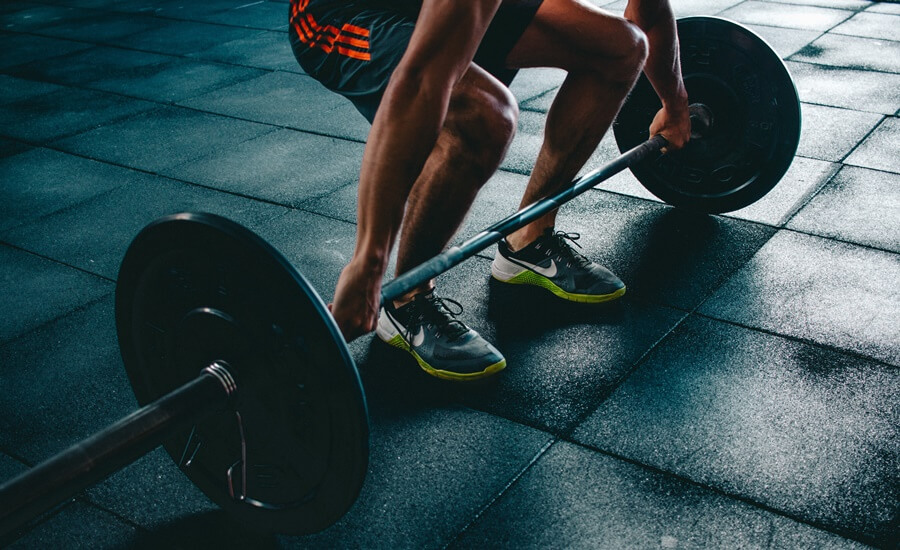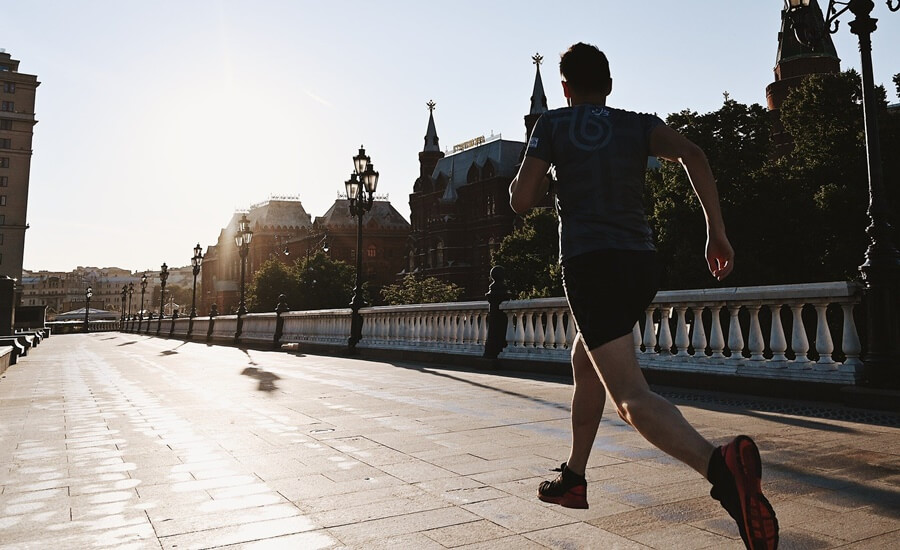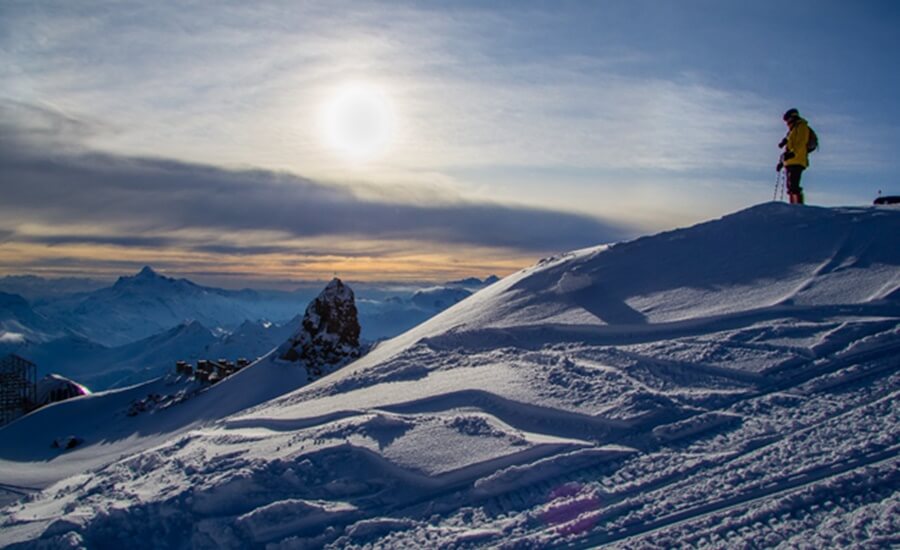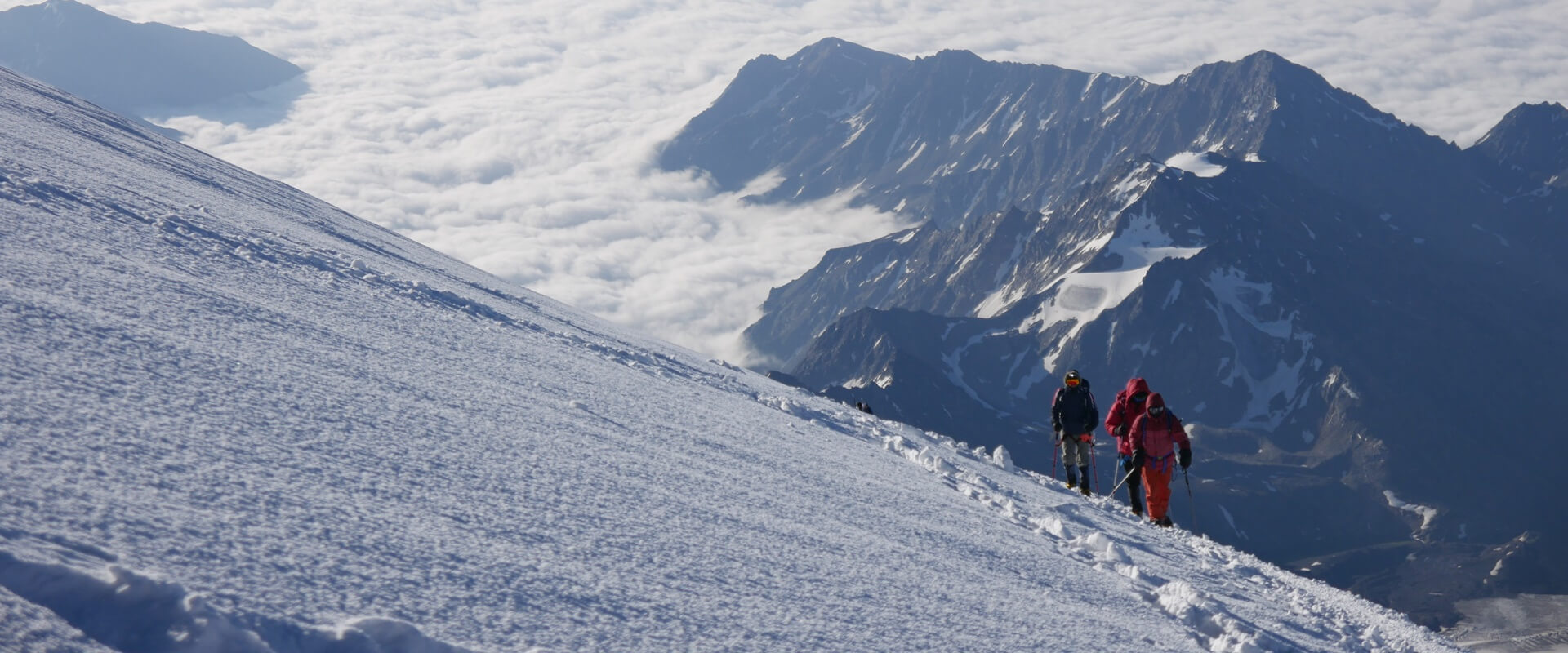We are often asked the questions:
“What is the best way to train for Mount Elbrus?”
or
“How can I train for climbing Mount Elbrus while living at low elevation?”
Most climbers have heard that high altitude is one of the greatest challenges of climbing Mount Elbrus. Therefore, they want to know how to train for this challenge specifically. Many know that living at a higher elevation, like in the Rockies or Cascades, which reach 14,000 feet, can be a very beneficial place to train for the high mountains like Elbrus. The reality is not everyone lives close enough to a mountain range to make this kind of training feasible (but don’t worry, there is hope – keep reading).
The next question we get asked is:
“Is there any way to mimic the high altitude of Elbrus, while training at a lower elevation?”
The answer is, “Maybe… but the jury is still out”. There are a few products on the market that you might have seen that claim to help produce the positive effects of high altitude training while still living at lower elevations. The most popular of these are hypoxic masks and hypoxic tents (hypoxic meaning low oxygen levels). These training aids can be expensive and remain unproven as to bringing meaningful benefit in training for mountaineering.
In this article we will stick with the tried and true basics of training for mountaineering. The training principles covered below have worked for countless people training in all sorts of locations and conditions from sea level to Colorado mountain towns. It is worth noting that even IF using hypoxic training devices, everything covered in this article is still the foundation of any mountaineering training plan!
So what can ambitious climbers do to prepare (lowland & highland friends alike)? Building up your basic fitness and strength with focused endurance training, helps lead to successful acclimatization and ultimately a high chance of summiting. This is the tried and true method of mountaineering. It has seen generations of determined men and women to the summits of the world’s great mountains and continues to render faithful service. Most guiding companies on Mount Elbrus (including Beyond Red Square) build a reliable acclimatization plan into their itineraries, typically the first five days of a tour. Don’t try and skip this and squeeze your climb into a shorter period of time! I actually did this on my first attempt at climbing Mt. Elbrus (attempted summit on day 3) and utterly failed! Proper acclimatization is vital to your success. Your job then, is to come to Elbrus fit and healthy so that acclimatization can do its work. Check out this chart of daily distances and elevation gains to get an idea of the altitude challenge Elbrus can present.
Daily distance and altitudes chart:
Distances are approximate to the nearest ½ mile or kilometer and altitudes are approximate to the nearest 100 feet or meters.
[table id=2 /]
** Day 2 mileage based off the popular acclimatization hike up Cheget peak. Your guide may choose to change acclimatization hikes based off of weather, group fitness or any other factor and mileage may change.
** Assumes the use of Snowcat on Summit Day (Day 6) on ascent but not descent – the standard climbing method.
** Sleeping Altitudes are based on location of hotels in Cheget (base of mountain) and Heart of Elbrus Lodge at basecamp. If using 4-star hotels in Azau (base of mountain) and 4-star Leaprus Barrel Huts, sleeping altitudes are 7,500 ft (2,300 m) and 12,830 ft (3,912 m).
Unfortunately, there is a small segment of the population whose bodies will struggle to acclimatize. The reasons are not well understood but it simply comes down to a person’s genetics. No one really knows how they will perform at altitude until they go to altitude. This is a chance everyone takes and it is good to be prepared for the reality that not everyone is built for mountaineering. That being said, you can be acclimatizing well and still have some symptoms of fatigue, nausea and headaches. It is important to be in very open communication with your guides and team about what you are experiencing so that they can help you determine its significance. Below are the basics of training for climbing Mount Elbrus no matter what elevation you live at. If you are in good shape at low elevation, you should be in good shape at high elevation after proper acclimatization. Also, Rachel Davidson with the Outbound Collective has a fantastic article with tips and resources for altitude training here.

#1 General Fitness: Strength and cardiovascular training
The building blocks of any athletic endeavour. On summit day you will ascend roughly 3000 feet (900 m) over approximately 2.5 miles (4 km) if you utilize the snowcat and 6000 feet (1800 m) over 4.5 miles (11 km) if you do not. Then you will turn around and walk another 4.5 miles on your descent back to camp. Elbrus is steep! You will be moving slow but your heart will be working hard. Training your cardiovascular system will help your muscles get the oxygen they need. Strength has to do with the step-by-step slog you will be making up the steep, ice-enshrouded mountain. Your quads, hamstrings and calves will be doing the brunt of the work. Strong legs and core will be one of your greatest assets!

#2 Endurance Training: Getting used to long days
On summit day you will ascend for 6-8 hours straight with only a few breaks. Then you will turn around and descend the way you came for another 3-4 hours. Training your body to exert itself continuously is very important. Endurance training is both physical and mental. Your body is getting tougher, but you are also learning where your limits are. The successful mountaineer is able to push through discomfort but also acknowledge when his body has had enough. Fatigue high on the mountain is one of the greatest dangers you could encounter. You need to have enough endurance not only to make it to the top but to make it down again. As the old adage goes, “the summit is only halfway”.

#3 Mountain-Specific Training: Preparing for the unique conditions of the mountains
When you are on Elbrus, you will likely be in a different environment than where you trained. Where you may have done most of your training in gym shorts, a t-shirt and running shoes, on Elbrus you will be in snow pants, a jacket and heavy mountaineering boots with crampons. You will also have your hands full with trekking poles and an ice axe. Moving in all this gear feels different and can be uncomfortable. Some climbers experience chaffing from their boots and get blisters. Others find that the weight of their packs tire their shoulders, causing uncomfortable soreness. These may seem minor things, but combine them with cold, altitude and fatigue, and they become the sorts of things that can break a climber. Being as familiar as possible with the clothing system and equipment you will use on the mountain will really be a plus! Live in Florida and don’t have mountaineering boots? That’s ok, go on a long hike on the beach with a weighted backpack. Figure out if you are prone to blisters, or if your backpack straps dig into your shoulders in weird ways. Here also is a tip on how to simulate breathing conditions on the mountain. All this information will pay dividends on your climb!
Exercises:
- Slow long runs (Cardio, Endurance) Slow runs working up to an hour and twenty minutes or longer in length are what you are shooting for. Your pace should be slow enough that you can maintain a comfortable conversation. Slow here is the key! Most regular folks should be thinking of paces 11 min/mile and above.
- Stairs or stair stepper, weighted or unweighted (Cardio, Strength, Endurance, Mountain-Specific) The weighted stair climber is a quintessential mountaineering exercise. Lace up those mountaineering boots, throw some weight in your climbing pack and start stepping (10 lbs is a great place to start and work up to 20 lbs). This all-encompassing exercise covers cardio and endurance when you go for over an hour, leg strength when adding weight, and mountain-specific when stepping up with a heavy pack on your shoulders.
- Squats, weighted or unweighted (Strength) Get those glutes, hammies and quads looking good…..oh, and ready to climb 🙂 If you are unfamiliar with proper lifting techniques be sure to ask a trainer at your local gym to show you how to safely utilize these exercises.
- General Core, Planks, Sit-ups etc. (Strength) Your core is what brings everything together. A strong core is a benefit in all physical activities! These are great for light exercise days or when you can’t make it to the gym or the trail.
- Weighted hikes (Cardio, Strength, Endurance, Mountain-Specific) Throw some weight in your pack and hit the trail. You are basically doing exactly what you will be doing on Elbrus. Great training! Look for hills to climb, they are your friends. Use trekking poles and get used to wielding them. Make sure to start small and work bigger. 15-20 lbs. is a great weight to work towards (the max amount of your pack on summit day at Elbrus).
- Long hikes (Cardio, Strength, Endurance, Mountain Specific) When I say long, I mean looooong. Most groups take about 8-12 hours to get to the summit and back, moving almost the entire time. That is a long time to exert yourself; if you have not done it before, it will be hard! It will be hard even if you HAVE done it before, so if you haven’t, it will be harder! 🙂 Finding time to do a couple of 6-8 hour-long hikes will be some of the best training you do. If you haven’t done much hiking, work up to these distances, they can be a shock to your body.
A few more thoughts:
What could be worse than not training at all for your climb? The answer is overtraining. Yes, it is possible to over train. There is only so much your body can handle at a time and it takes time for training adaptations to take effect. You need to give your body ample rest between training sessions. If you are new to training this can be a difficult line to discern. As a rule of thumb, if you go into more than 3 or 4 consecutive training sessions already feeling tired or fatigued and not ready and invigorated for your next session you are probably overtraining and need to rest.
Finally, don’t push hard in training right up until you hop on the plane to Elbrus. Take the week or maybe two weeks before your trip to ramp back the training and allow your body to go into deeper recovery. Only very light exercise to keep your muscles loose and limber are recommended during this time. Note this is a general outline of a training plan. In truth there is no one-size-fits-all training plan as everyone’s bodies are different and everyone has different capacities to train. If you want the very best training for Elbrus possible we recommend working with a coach or athletic trainer experienced in training for mountaineering to create a training program designed for you and your schedule. Scroll to the bottom for some suggestions on where to find personal training resources. In conclusion, don’t be scared away from climbing Elbrus if you live at low altitude, or don’t have a lot of experience climbing mountains above 14,000 feet. If you train your body well, you are giving yourself the best chance possible to summit Europe’s highest peak. Good luck and happy training!

Coaching and Training Resources
12 week Mountaineering fitness
Articles
7 tips for high altitude hiking
Video Resources
Hypoxic training articles

